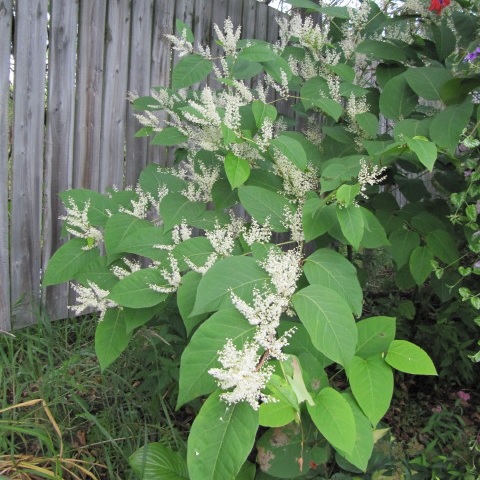
The term ‘invasive’ can be considered to be relative, since it’s difficult to quantify one plants invasiveness and compare it to that of another plant.
However, there are a few key features to take into consideration, particularly the number of cases, the damage it causes, and where it can be found.
What is Bohemian Knotweed
Bohemian knotweed is a hybrid between Giant knotweed (Fallopia sachalinensis) and Japanese knotweed (Reynoutria japonica). As such, it shares characteristics of both plants. The leaves of Bohemian knotweed are typically smaller than that of Giant knotweed and larger than that of Japanese.
Initially introduced as an ornamental plant in Ireland, Bohemian knotweed has since been detected in the wild.
Case Numbers and Location
So far, there have been very few reported cases of bohemian knotweed: so far, it’s considered to be pretty rare.
Although there aren’t as many cases of Bohemian knotweed as there are Japanese knotweed, that doesn’t mean it doesn’t have the potential spread. Some scientists actually suggest that hybrid plants have potential to be more harmful than their parent plants (in this case, Japanese and Giant knotweed).
Some cases of Bohemian knotweed have been found to be able to produce male plants that are seed-producing, which is very rare. Although most don’t, this does mean that bohemian knotweed could potentially spread more rapidly than other species of knotweed.
This ability combined with its lack of natural predators does mean that Bohemian knotweed has the potential to become as invasive as Japanese knotweed, if not more so.
As briefly mentioned above, Bohemian knotweed is relatively rare – there are only a small number of cases within the UK. There are more found across Ireland, where it was first introduced, but more cases are found in the northern-most states of the US, and notably areas of Asia, where it is native to.
Is It Damaging?
Similar to Japanese and Giant knotweed, Bohemian knotweed spreads rapidly and causes damage to native ecosystems, building structures, underground pipes, and riverbanks.
So far, Bohemian knotweed doesn’t appear to cause any more damage to physical structures and nature any more than other species of knotweed. However, it’s worth noting this means that Bohemian knotweed is still pretty damaging!
What Can I Do About Knotweed on My Property?
If you’re struggling with knotweed on your property, be it Japanese, Giant, or Bohemian, Taylor Total Weed Control can help you.
If you want to find out more about how Taylor Total Weed Control can help you with your knotweed problem, why not take advantage of our free surveys? One of our expert team members will survey your property and let you know what treatment plan will best benefit you, and give you a no-nonsense quote as to how much you might expect to pay.
Plus, if you have an enquiry about Japanese knotweed removal, we will match any written quotation from a PCA-registered company! What have you got to lose?
Free Survey
Read More: Bohemian Knotweed: Is This Just Plant Life or a Catastrophe?
